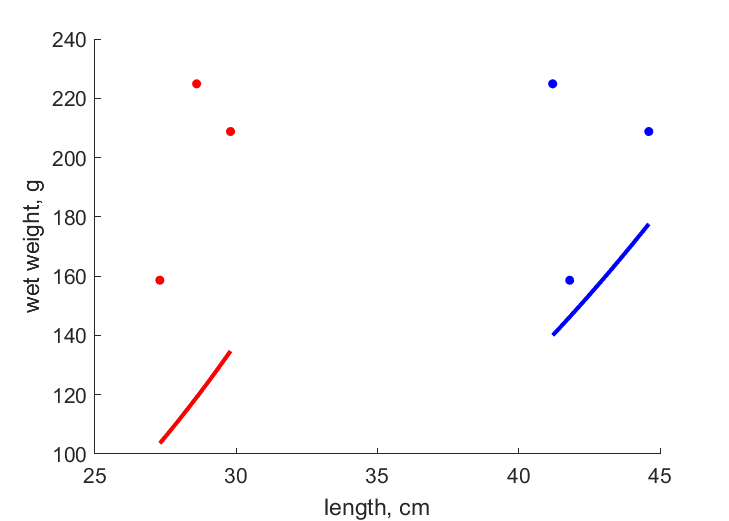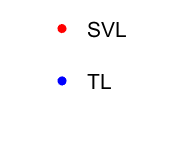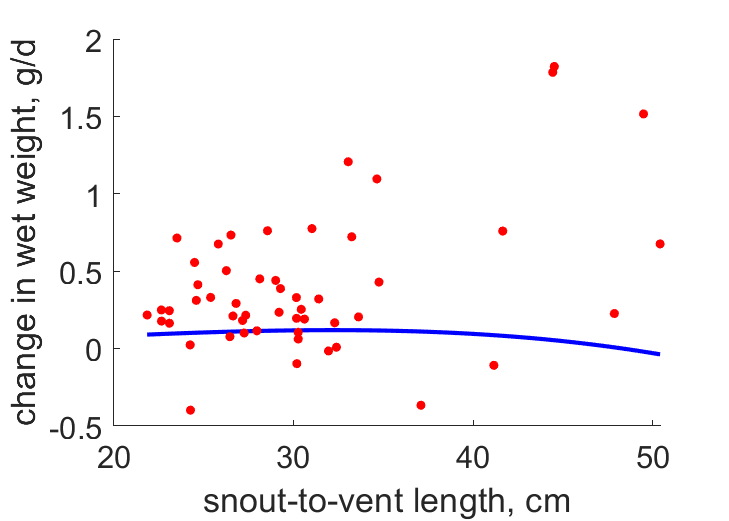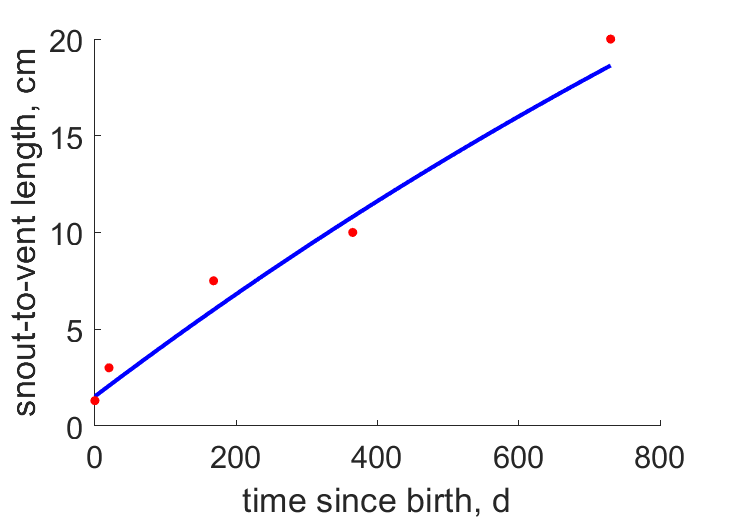Predictions & Data for this entry
| Model: std | climate: Cfa | migrate: Mp | phylum: |
| COMPLETE = 2.5 | ecozone: THn | food: biCi | class: |
| MRE = 0.181 | habitat: 0iFm | gender: Dg | order: |
| SMSE = 0.073 | embryo: Fh | reprod: O | family: |
Zero-variate data
| Data | Observed | Predicted | (RE) | Unit | Description | Reference |
|---|---|---|---|---|---|---|
| ab | 60 | 45.62 | (0.2396) | d | time since birth at birth | ADW |
| tp | 730 | 546.8 | (0.2509) | d | time since birth at puberty | ADW |
| am | 9125 | 9124 | (8.446e-05) | d | life span | AnAge |
| Lb | 1.6 | 2.073 | (0.2955) | cm | total length at birth | Luhr2008 |
| Lp | 23.5 | 20.31 | (0.1359) | cm | total length at puberty | Luhr2008 |
| Li | 97 | 82.12 | (0.1534) | cm | ultimate total length | Luhr2008 |
| Wwp | 14.2 | 16.76 | (0.1803) | g | wet weight at puberty | Luhr2008 |
| Wwi | 1000 | 1108 | (0.1084) | g | ultimate wet weight | Luhr2008 |
| Ri | 3.836 | 3.838 | (0.0004978) | #/d | maximum reprod rate | Luhr2008 |
Uni- and bivariate data
| Data | Figure | Independent variable | Dependent variable | (RE) | Reference |
|---|---|---|---|---|---|
| LW_SVL |   | length | wet weight | (0.3967) | Luhr2008 |
| LW_TL |   | length | wet weight | (0.217) | Luhr2008 |
| LdL |  | snout-to-vent length | change in SVL | (0.6555) | Luhr2008 |
| LdW |  | snout-to-vent length | change in wet weight | (48.14) | Luhr2008 |
| tL |  | time since birth | snout-to-vent length | (0.1156) | Luhr2008 |
Pseudo-data at Tref = 20°C
| Data | Generalised animal | Siren lacertina | Unit | Description |
|---|---|---|---|---|
| v | 0.02 | 0.01211 | cm/d | energy conductance |
| kap | 0.8 | 0.9531 | - | allocation fraction to soma |
| kap_R | 0.95 | 0.95 | - | reproduction efficiency |
| p_M | 18 | 64.52 | J/d.cm^3 | vol-spec som maint |
| k_J | 0.002 | 0.002 | 1/d | maturity maint rate coefficient |
| kap_G | 0.8 | 0.8022 | - | growth efficiency |
Facts
- Enters a state of aestivation in stream of lake mud to avoid dessication (Ref: ADW)
- Non-aestivating animals are capable of long-term (2.2-5.2 years) persistence without feeding and can survive losses of 45-86% percent of their body mass; have large fat reserves in their tails (Ref: Luhr2008)
Bibliography